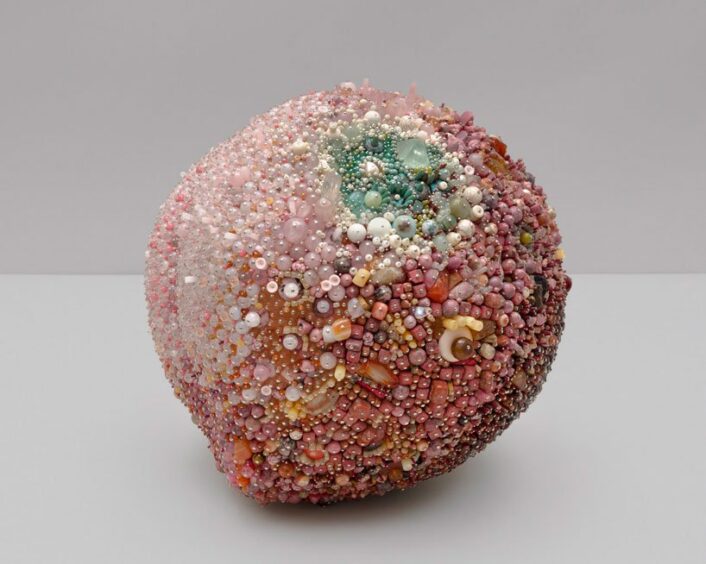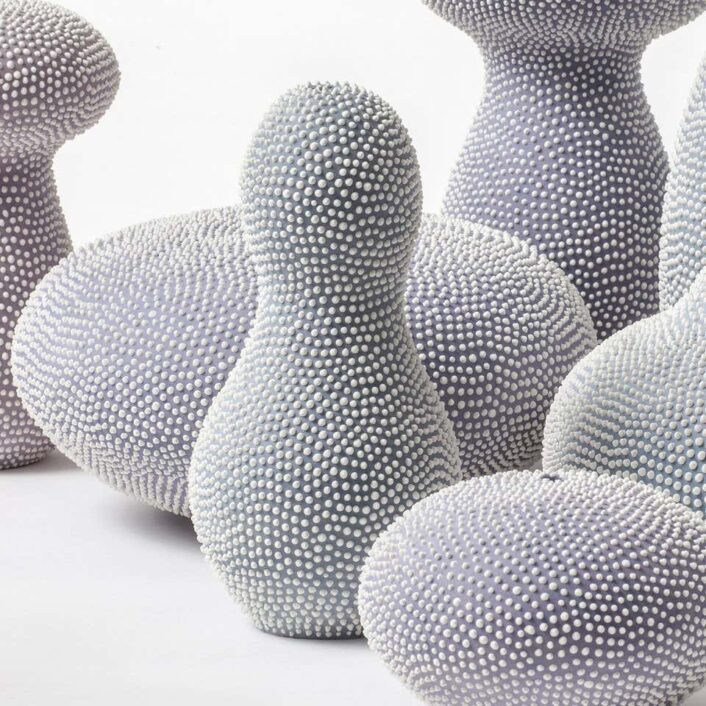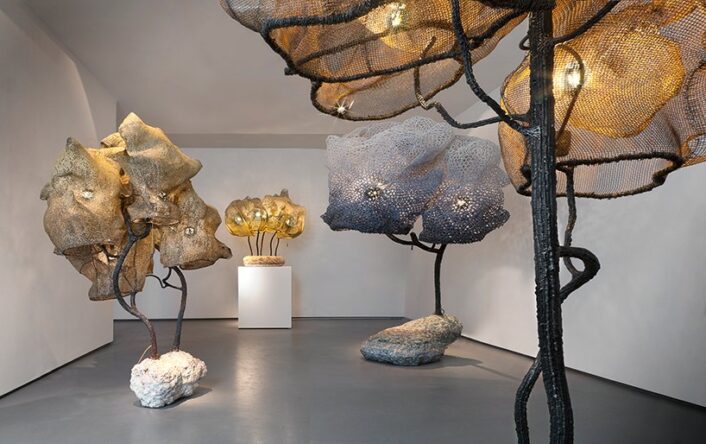Fine Art
Haegue Yang
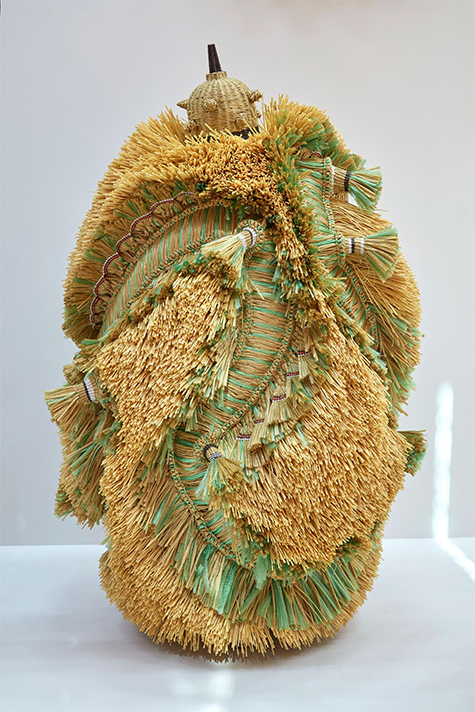
“The Intermediate- Dragon Conglomerate,” 2016. Made from artificial straw, power-coated steel frame and mesh, casters, and plastic raffia string. Presented at the Art Gallery of Ontario, Canada.
Dimensions are: 180 cm. x 115 cm. x 115 cm.
Image courtesy of: Frieze, photographed by: Craig Boyko
Haegue Yang is a South Korean artist that uses ordinary objects in unusual ways. What results is a feast for the senses… a multi-sensory art experience that involves the visual, tactile, and auditory. The artist removes mundane objects from normal situations and stages them in a way that presents abstract compositions that reference personal experiences.
Yang often draws upon historical references and personal records to create her unique “environments.” Courtesy of Wallpaper, “Yang frequently stages multisensory environments, which—together with the mundane objects—become meditations on labor, emotional connection, and dislocation, replete with references to various moments of abstraction throughout art history.”
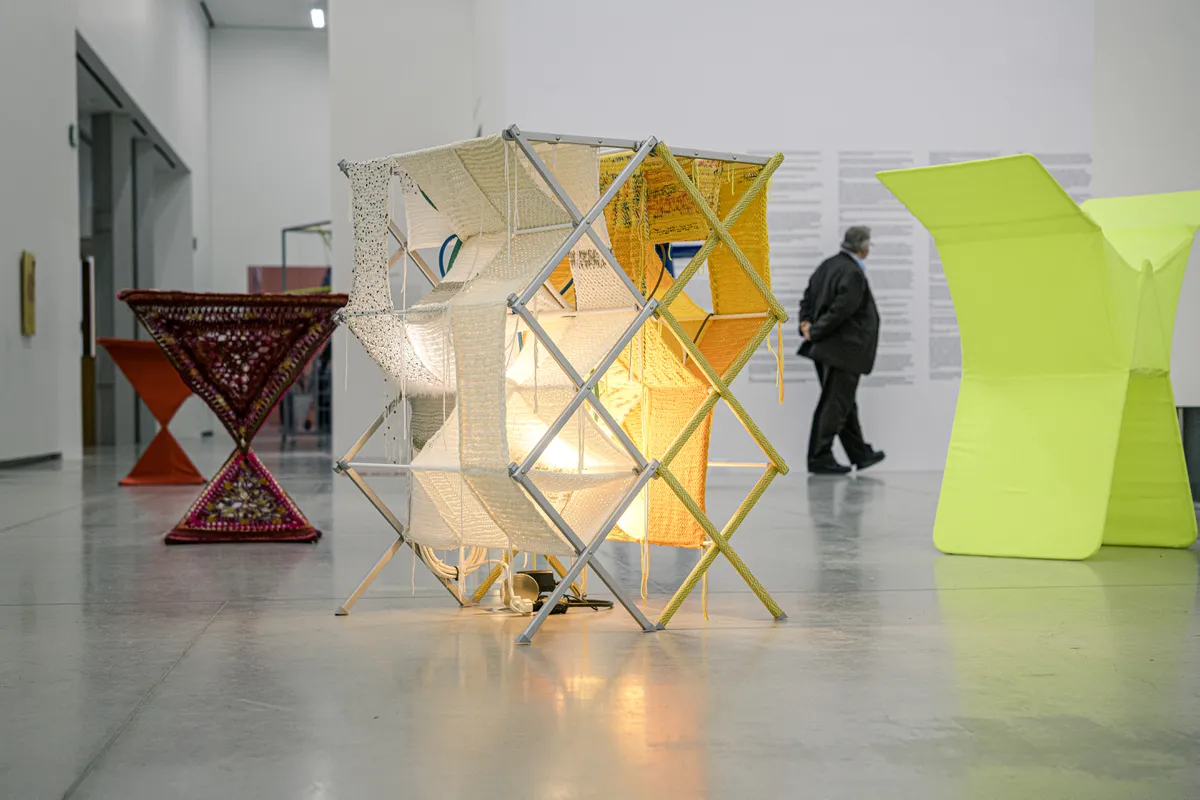
Yang’s series of drying rack sculptures in Canada.
Image courtesy of: The Globe and Mail, photographed by: Christopher Katsarov
Living in both Seoul and Germany (where Yang received an MFA from the Städelschule Frankfurt am Main), the artist’s two locations is just one contrast that ties into her work- East vs. West. Yang is frequently convergent upon contrasts… between the traditional handicrafts she uses and the modern consumer goods that she presents, between mass-produced items and one-of-a-kind fine art pieces, and between the well-known and the unrecognizable.
At Yang’s 2020 Canada show, items that Yang commonly employs were front and center. Among those repeatedly used are Venetian blinds and clothing racks. Yang first used dryer racks in 2006 when she created an installation in her grandparents’ abandoned house in a dilapidated and depressed Seoul suburb. A recreation at the Art Gallery of Ontario was presented alongside a row of photographs that feature clothing racks in different basements and condominiums. Yang added a number of different colored dryer racks nearby; each painted in a way that makes it look like a completely different object.
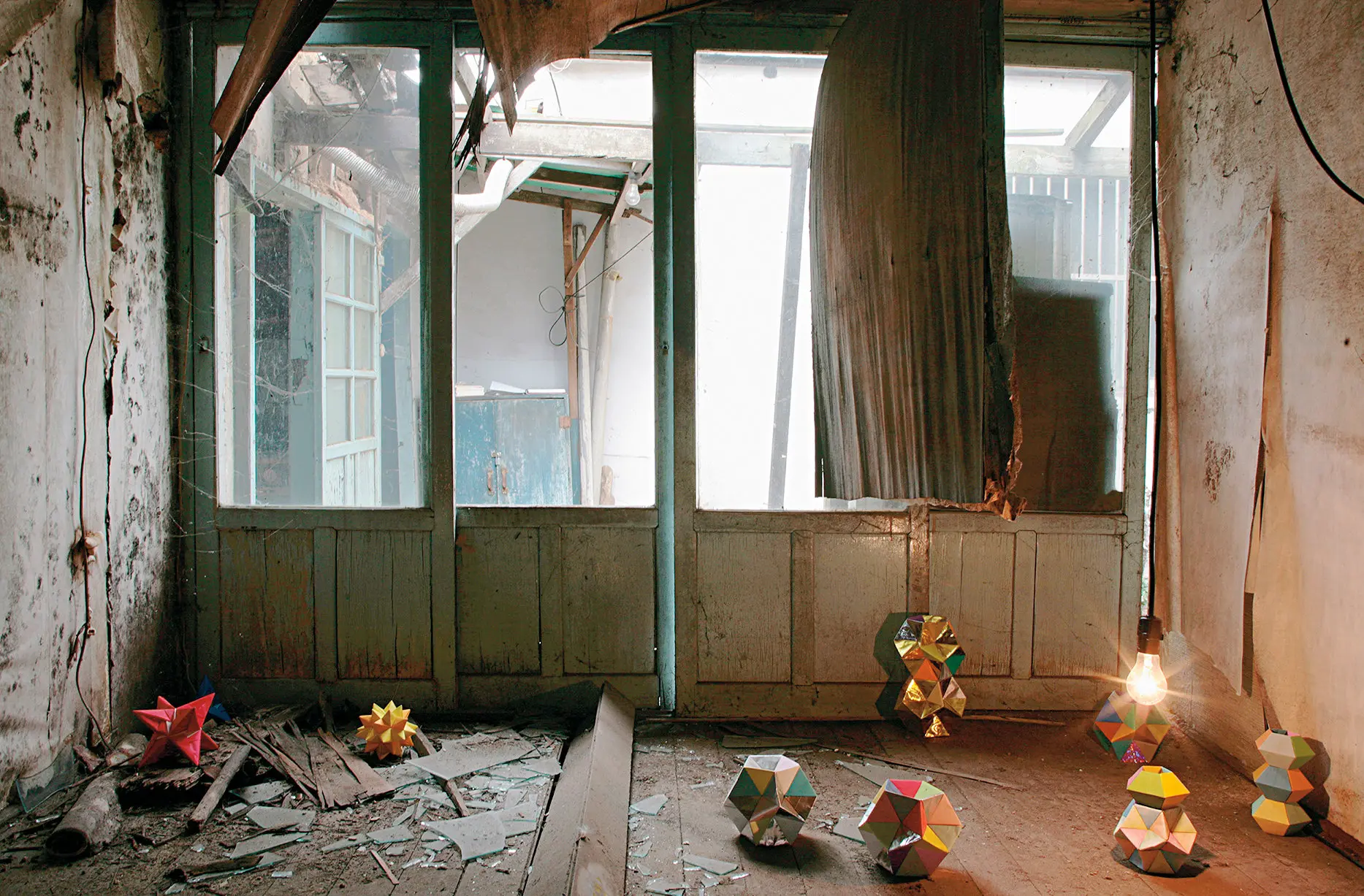
“Sarong 30,” a 2006 installation at an abandoned home in Incheon, South Korea. The installation includes light bulbs, light chains, origami objects, strobes, fabric, a fan, mineral-water bottles, a cooler, a mirror, garden Balsams, a wooden bench, chrysanthemums, fluorescent paint, spray paint, an IV stand, a wall clock, and piles of wood.
Image courtesy of: The New York Times, photographed by: Daenam Kim
Perhaps it was Yang’s upbringing that has made cultural identity, along with loss and memory, one of her central themes. Loneliness is also something that is often repeated in Yang’s work… partially due to a number of separations during her childhood that obviously left a vast void. Born in Seoul in the midst of political upheaval due to the aftermath of the Korean Peninsula’s division, the Yang family was commonly subject to melancholy surroundings.
Yang’s father was forced to seek employment as a construction worker after being fired from his job as a newspaper journalist for protesting government censorship. Incidentally, the elder Yang was not alone, thousands of other South Koreans had to do the same thing in order to make a living. After her father returned, Yang’s parents divorced and her mother moved away to join a workers’ and trade-union movement. These unique childhood experiences became a pivotal part in Yang’s work. In addition, South Korea’s rapid industrialization and the consequent effects of mass-produced goods on traditional crafts and the natural world are themes that are intrinsic in Yang’s unique works.
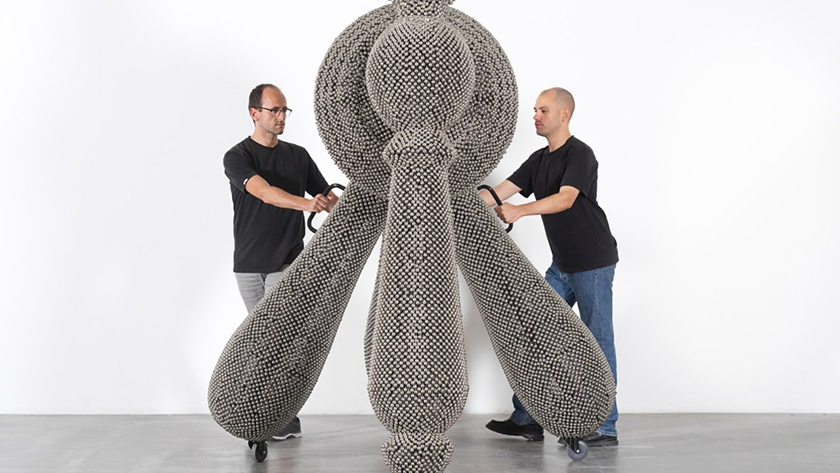
“Sonic Handles- Law of Three Bodies,” 2019. Materials include powder-coated steel frame, caster, mesh, handles, nickel-plated bells, and steel rings. Commissioned for the Marron Atrium by MoMA.
Image courtesy of: MoMA, photographed by: Nick Ash
Yang does not stay put in any one location for very long. Perhaps it is because she does not want to embrace a single nationality? In 2019, prior to the pandemic, Yang was in fifteen shows on four continents. One of the biggest shows was at MoMA, staged by the museum’s chief curator of media and performance, Stuart Comer. With perspective to the global world, Comer explained his view on Yang and her work, “Every institution now wants to be global and to have a more international and cosmopolitan point of view, but what does that really mean?
Courtesy of an article in The New York Times written by Zoe Leseaze, “At its worst, it can mean that non-Western artists are tacitly required to represent (or perform) the cultures they came from. Just as the institutions of the 1980s and ’90s seized on artists creating work around their socially marginalized identities (female, gay, nonwhite), it sometimes feels as though the current art world showcases people born outside the United States or Europe only on the grounds that their art refers to their heritage. Yang, however — an artist who is not known to spend more than a few days or weeks at a time in any given place — takes a stubbornly elliptical approach, refusing to embody any single nationality or perspective in her work. By embracing ambiguity, Yang has found a way to make art about identity without tying herself to one based on gender, race or geography. You cannot reduce it to a political one-liner.”
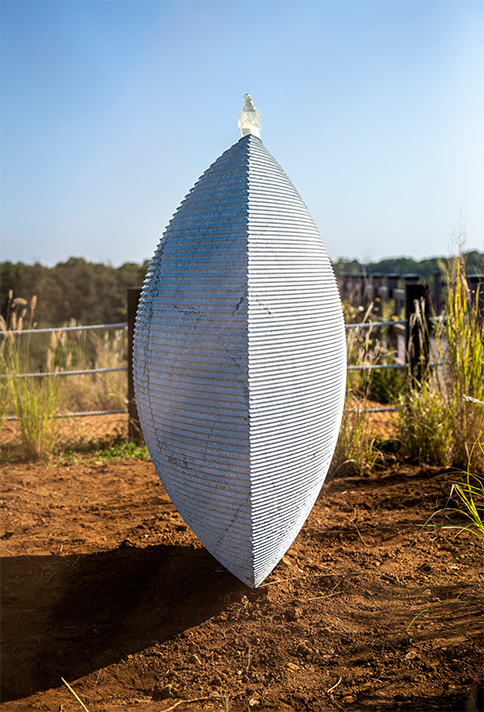
The five-foot-tall sculpture at the DMZ is made from a block of gray soapstone; perched on top is a translucent bird.
Image courtesy of: The New York Times, photographed by: Shinwook Kim
Recently, Yang’s sculptures were installed outdoors just a mile south of North Korea’s border at the Korean Demilitarized Zone. Yang’s 2021 soapstone sculpture is located on the site of a former guard post; it is part of Unimaru Art Museum’s inaugural exhibition titled, “2021 DMZ Art and Peace Platform.”
In order to visit her piece in person, Yang was required to wear a bulletproof vest and a helmet, she also needed to pass through an imposing military checkpoint and leave her phone behind. The sculpture is deceptive in that from certain angles, it resembles a sphere; yet from other angles, the sculpture it looks like a thin, lens-like shape. The bird, a 3-D piece printed from resin, is a species native to Korea. About the design of the imposing sculpture, Yang said, “I knew from the beginning that almost nobody would see it in person, and I think it will be more surveilled than visited. I wanted to make something that is hard to believe but became a fact.”
